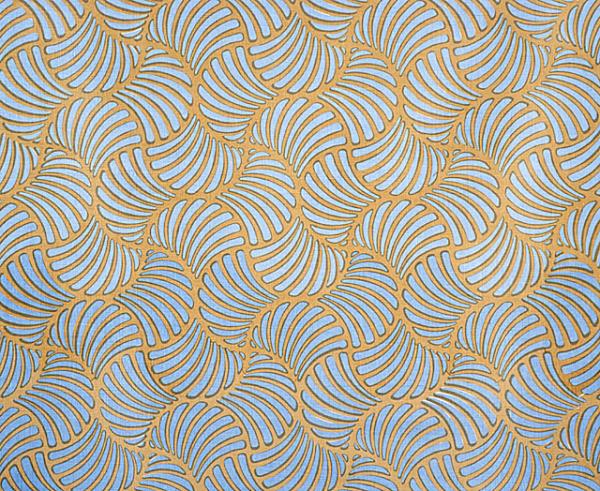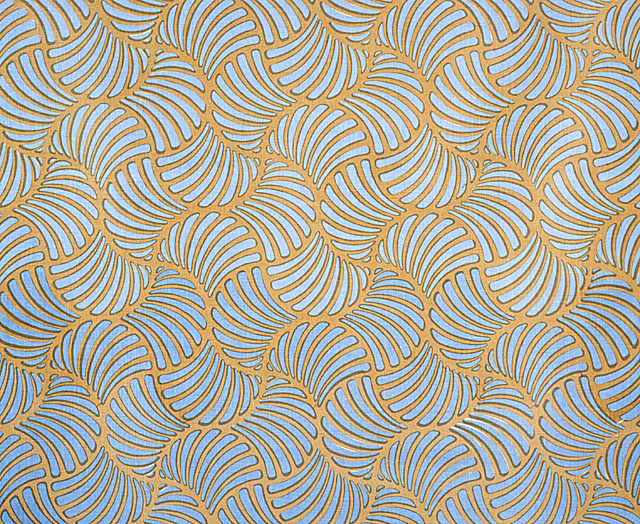If you visit LACMA’s new Ray’s restaurant once it opens on March 3, you will not fail to notice three vibrant blue and gold textiles stretched out on the wall facing the entrance. The design, called Ogee, features a repeating pattern of interlocking fan-shaped motifs that together form a meandering double-curve outline. This S-curve, known as an ogee, has deep roots in mathematics and architecture, where it formed the basis for the Gothic pointed arch. Here, the ogee expands and reproduces itself in variations giving a sense of movement and rhythm to the fabric surface.
The textile was designed in 1964 by Bernard Kester. This was one year before he began working as an exhibition designer at LACMA—where he still works today. In 1964 Bernard was a ceramics and textile artist who taught design at UCLA, where he had been an instructor for ten years. In 1962 he became involved with an interior design company, Crawford and Stoughton, a small-scale operation with a storefront on a chic stretch of Robertson in what was then known as “Designer Row.” Bernard designed textiles for Crawford and Stoughton on a freelance basis and Ogee came out of this partnership.
Ogee started—as with all of Bernard’s designs—in a sketchbook where he would work and rework an idea to begin his process of visualization. Once he completed this first round of edits, Bernard would then screen print a short textile length by hand. If the final product looked good, the next step was to find a screen-printing shop to produce a full run. The entire process usually took about two months. (In contrast, when Ogee was selected for Ray’s it only took a few days from the word “go” to photograph, color correct, and reprint the lengths needed for installation.)
I asked Bernard if the selection of his textile for LACMA’s new restaurant was a testament to his work’s ability to withstand the test of time. He shrugged: “That’s for someone else to decide.”
Nicole LaBouff, Wallis Annenberg Curatorial Fellow, Costume and Textiles






